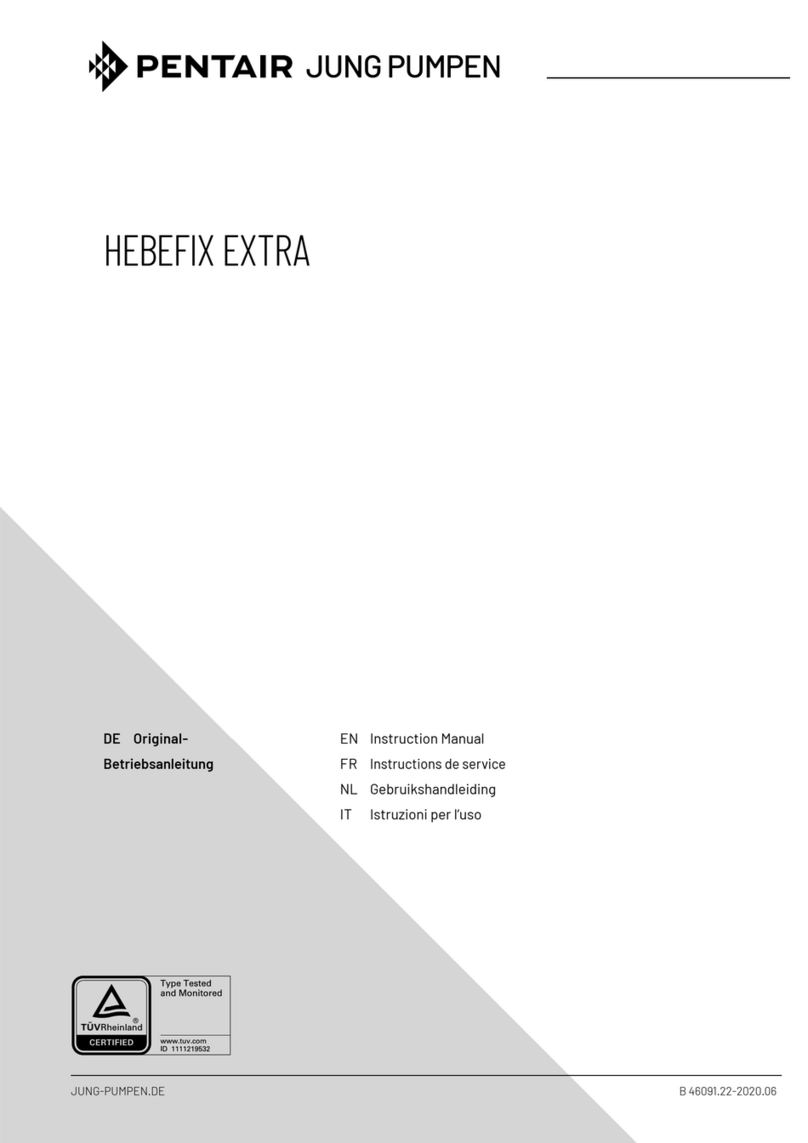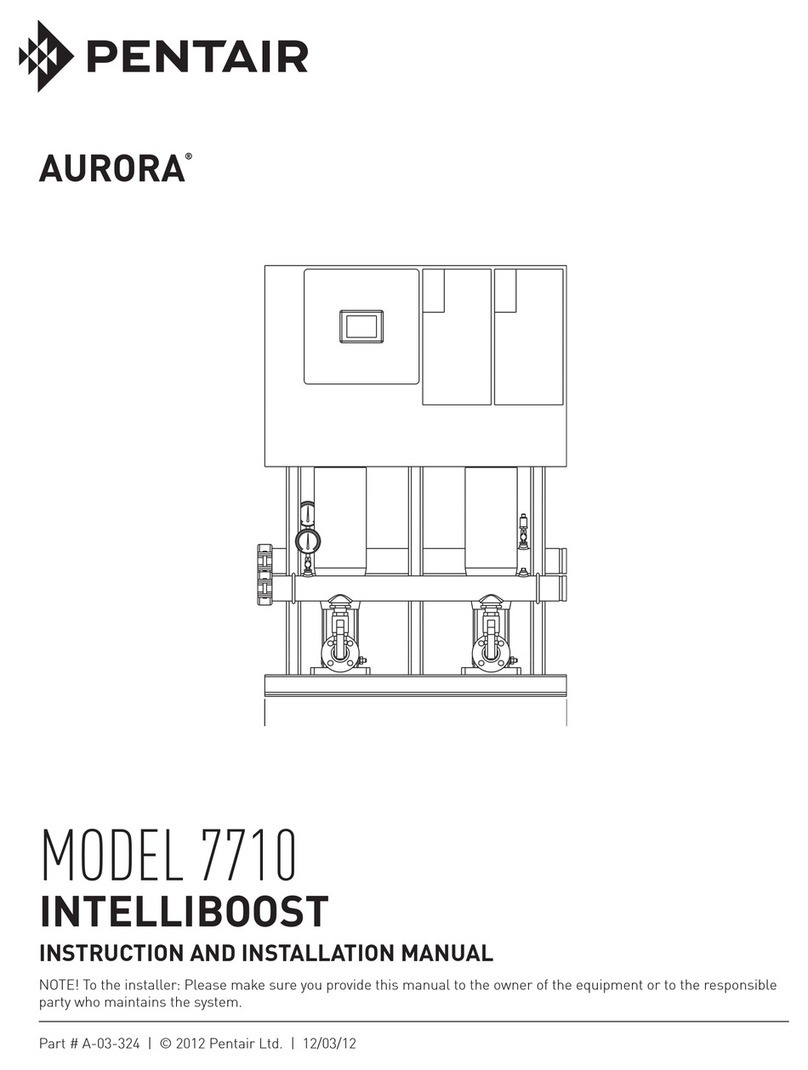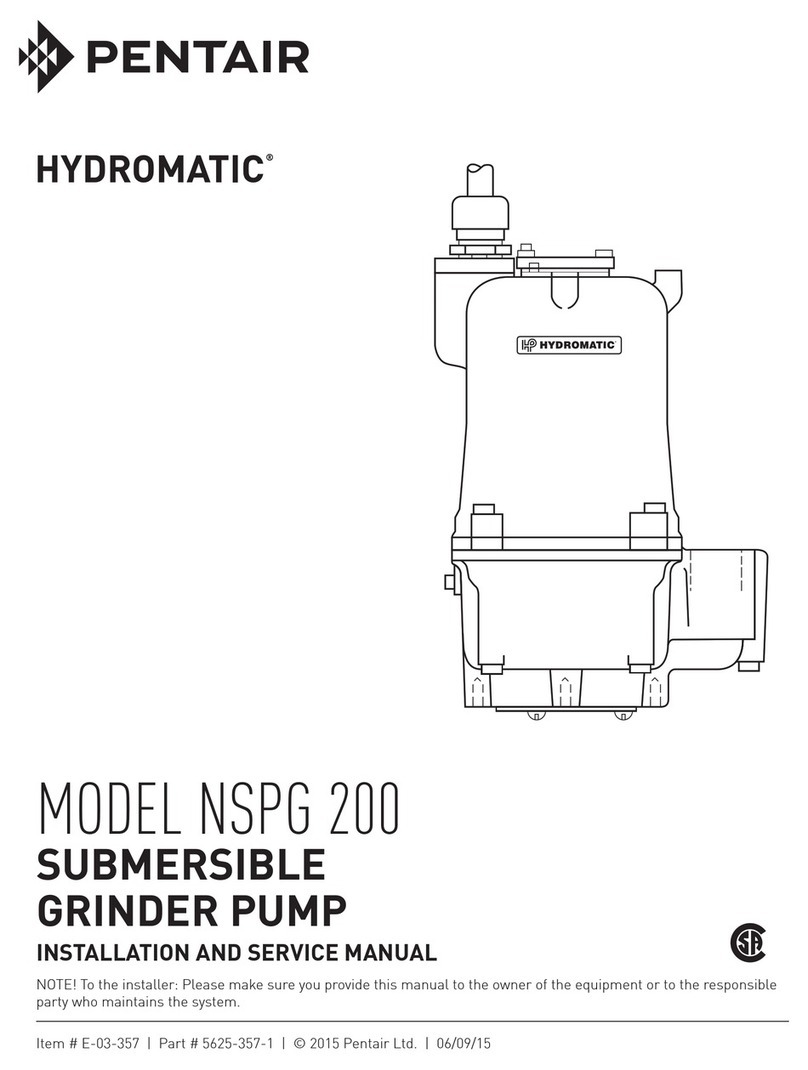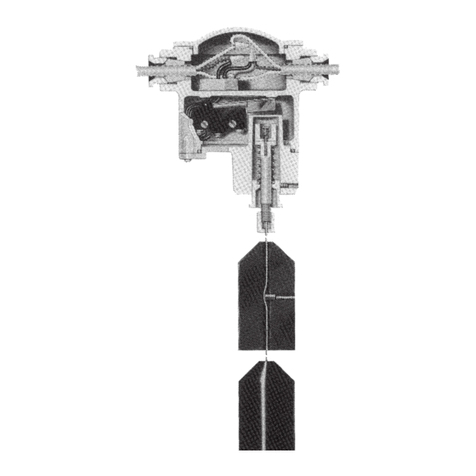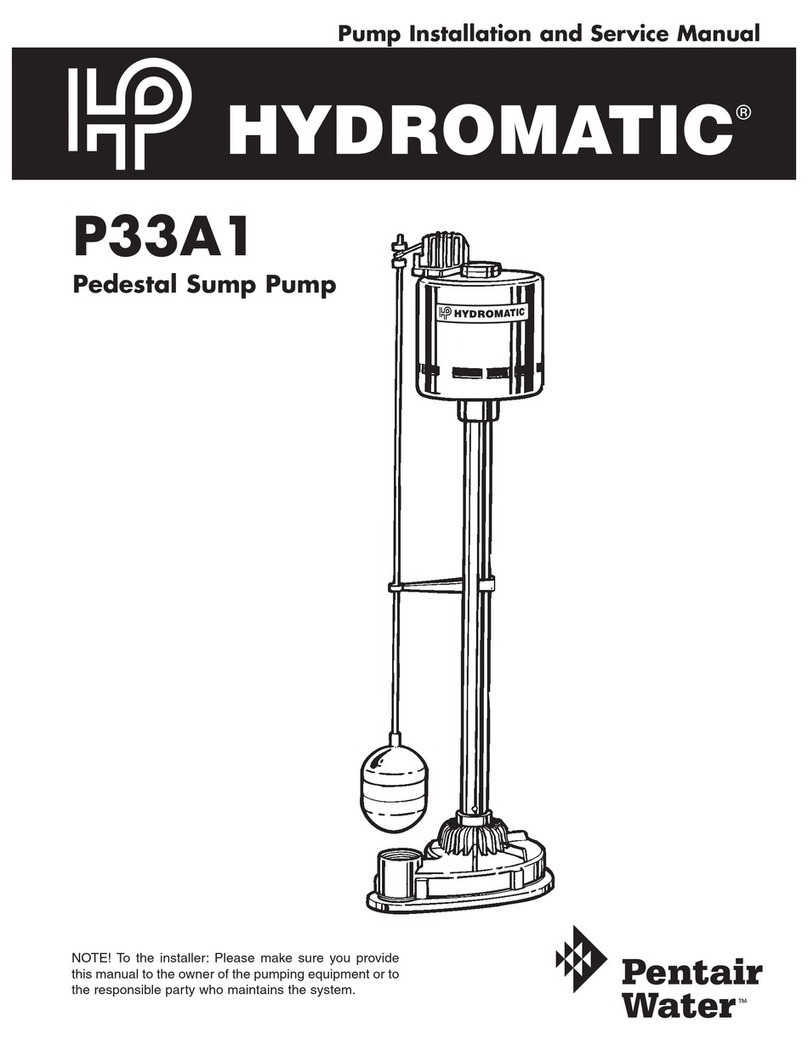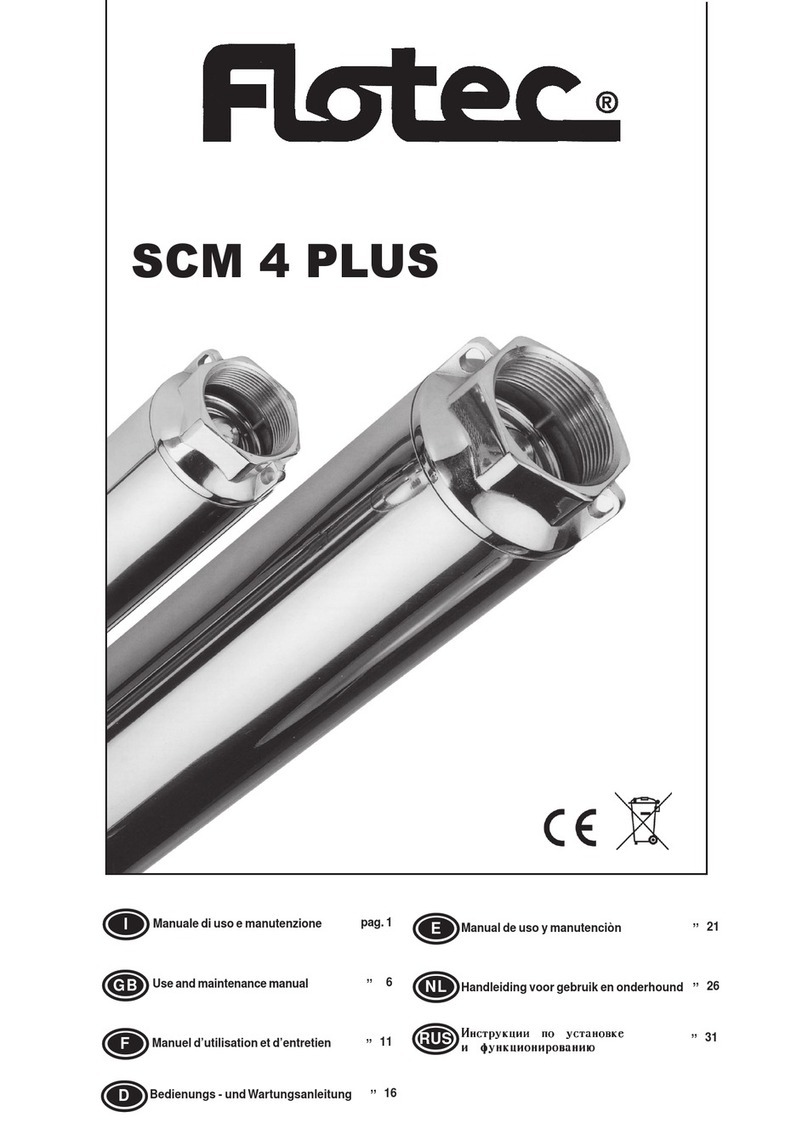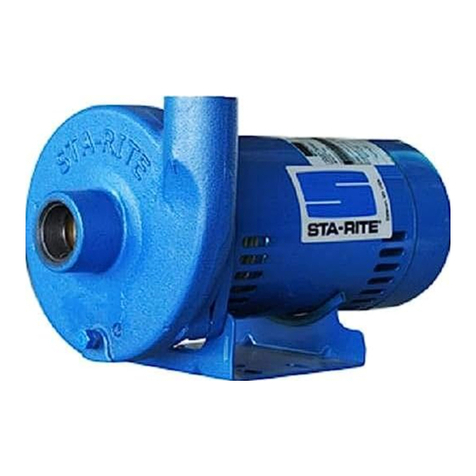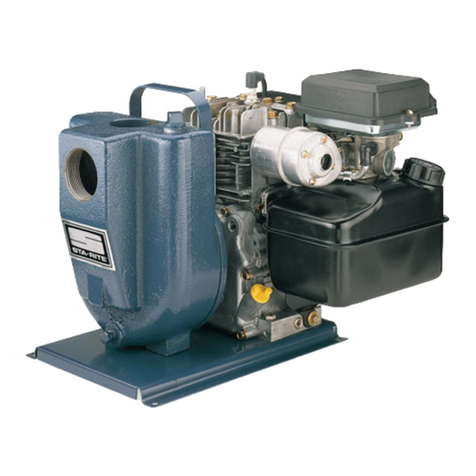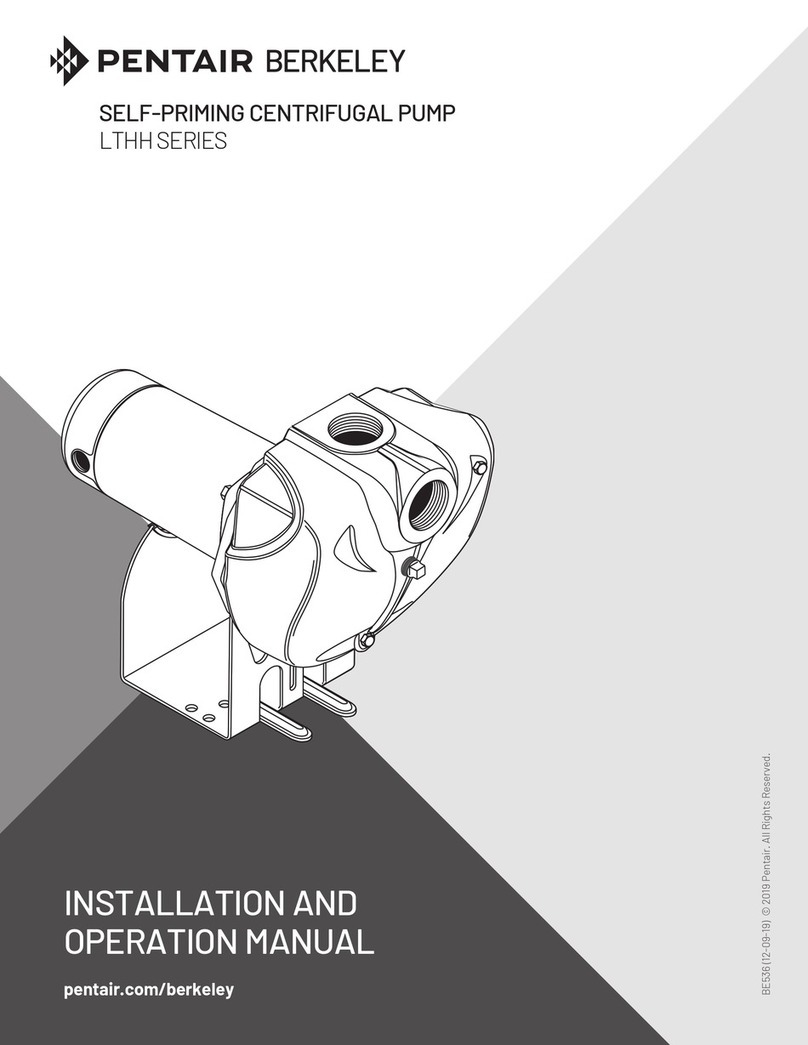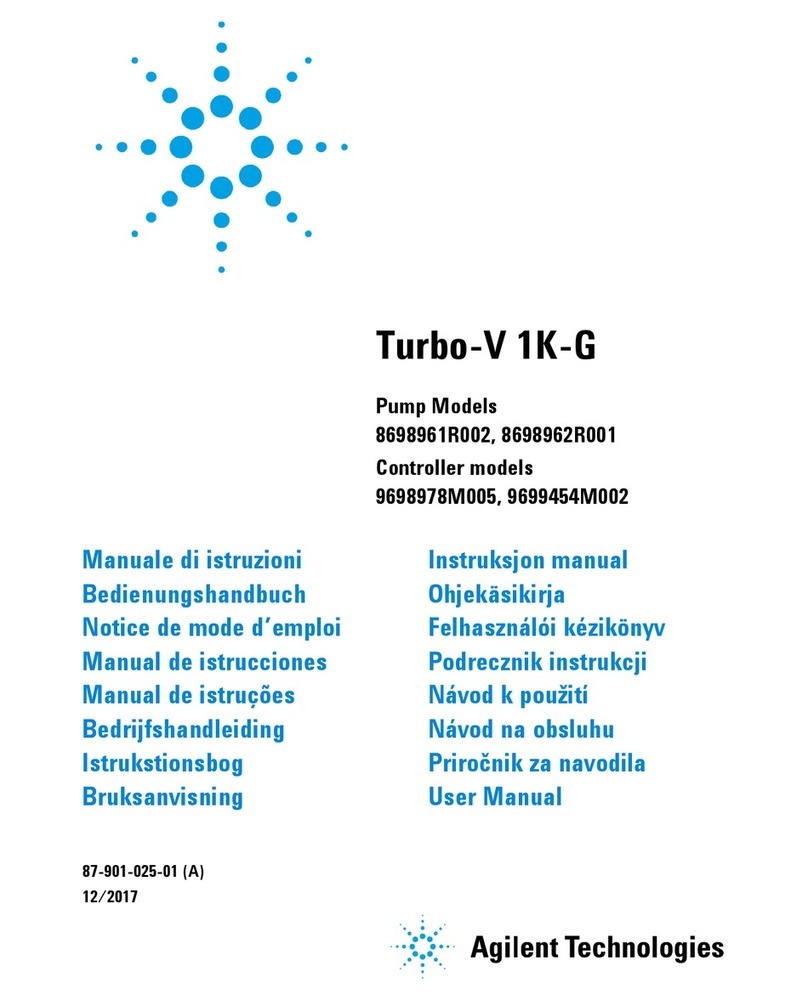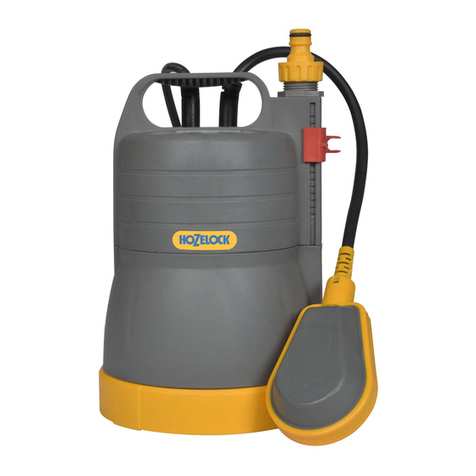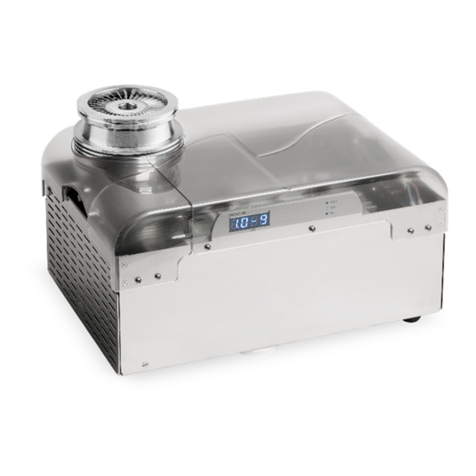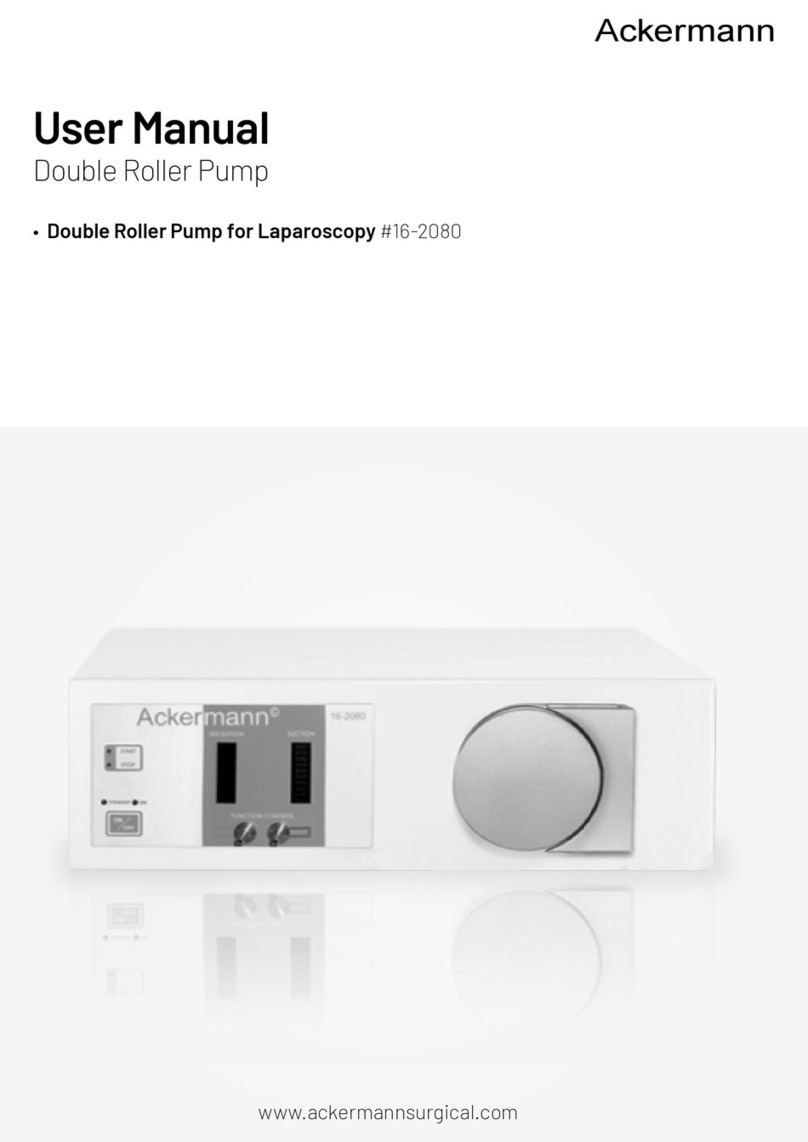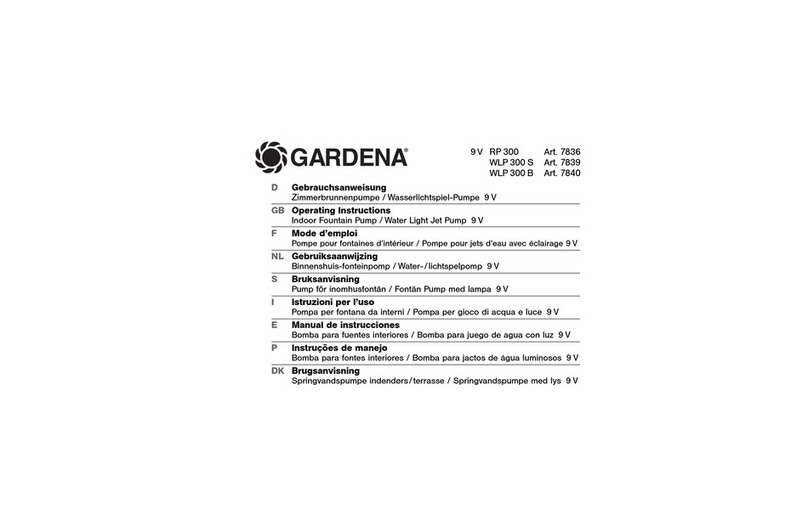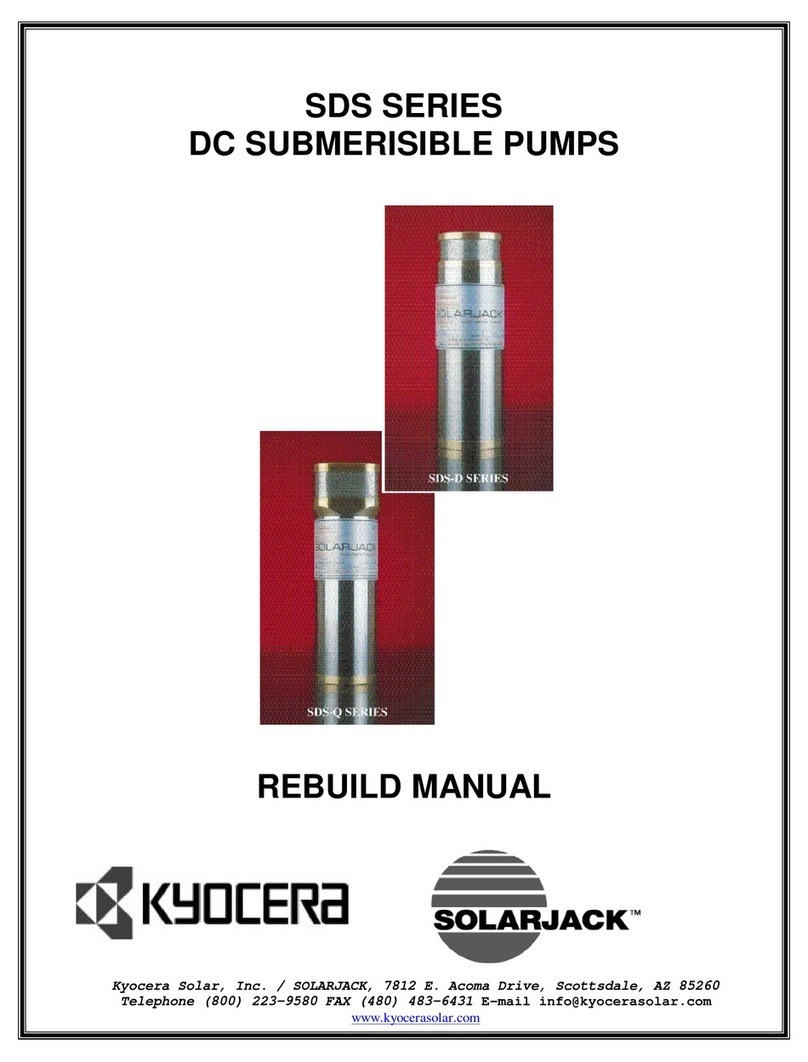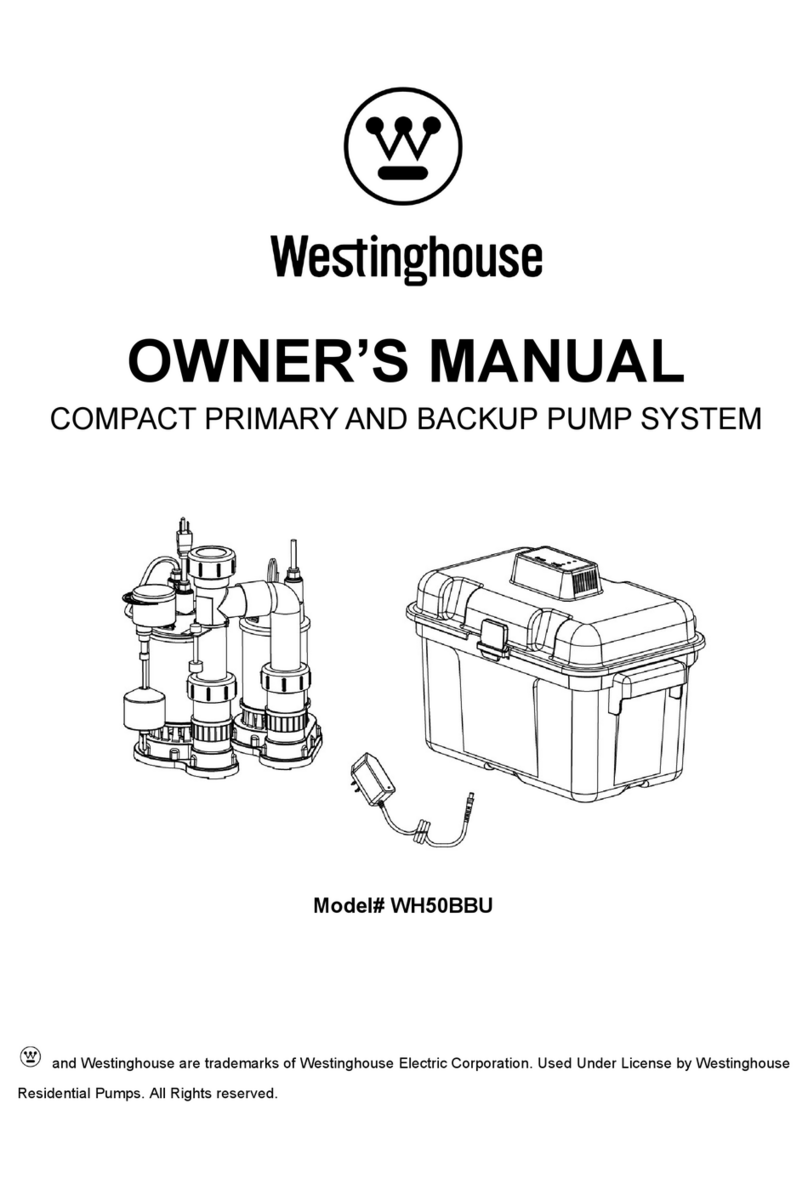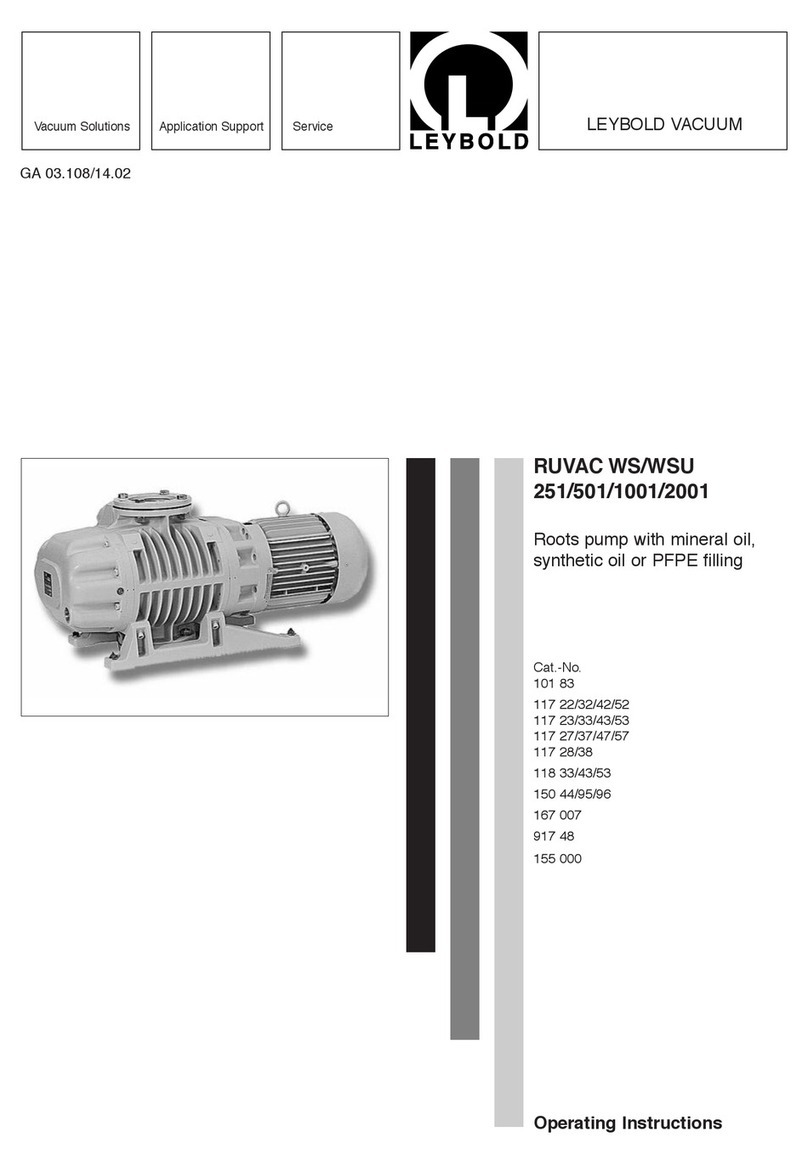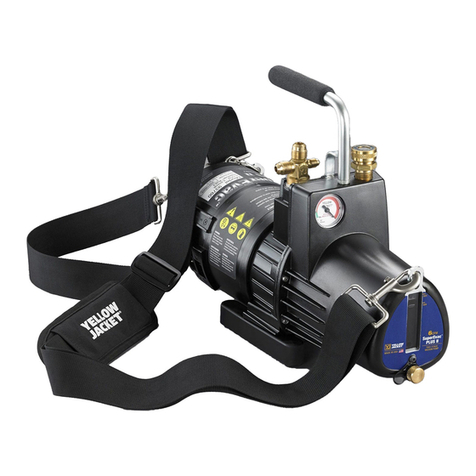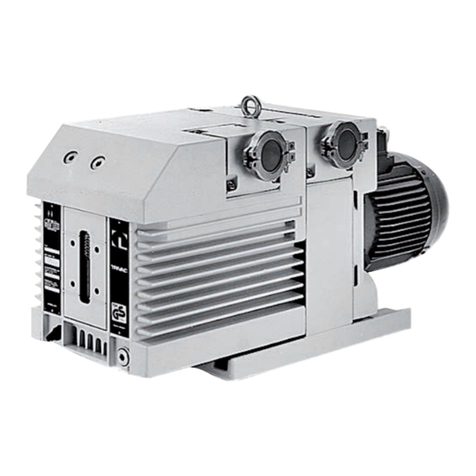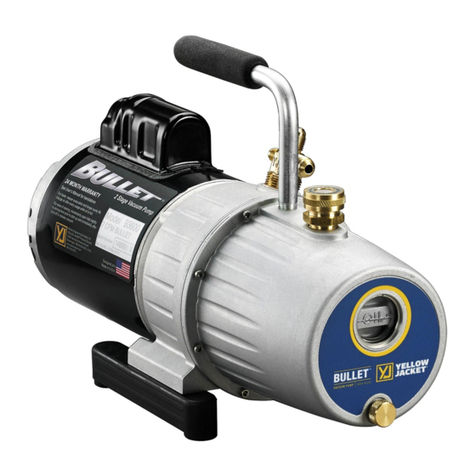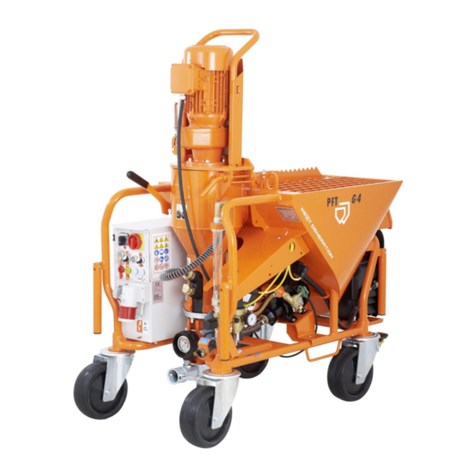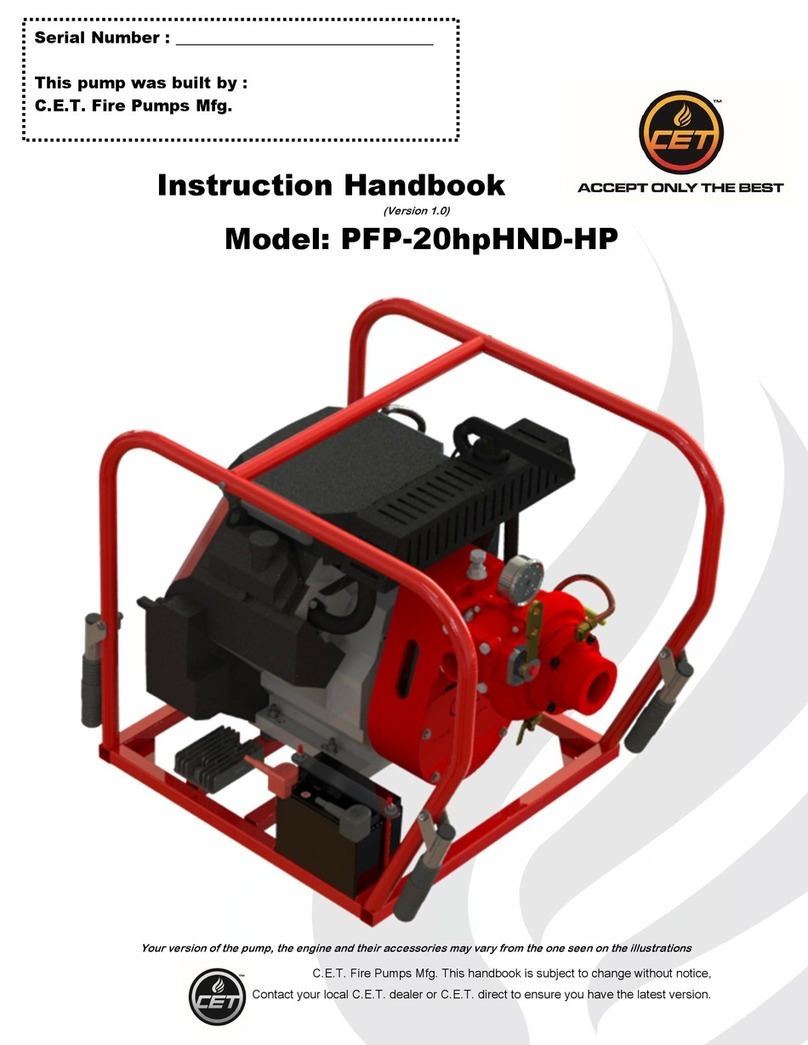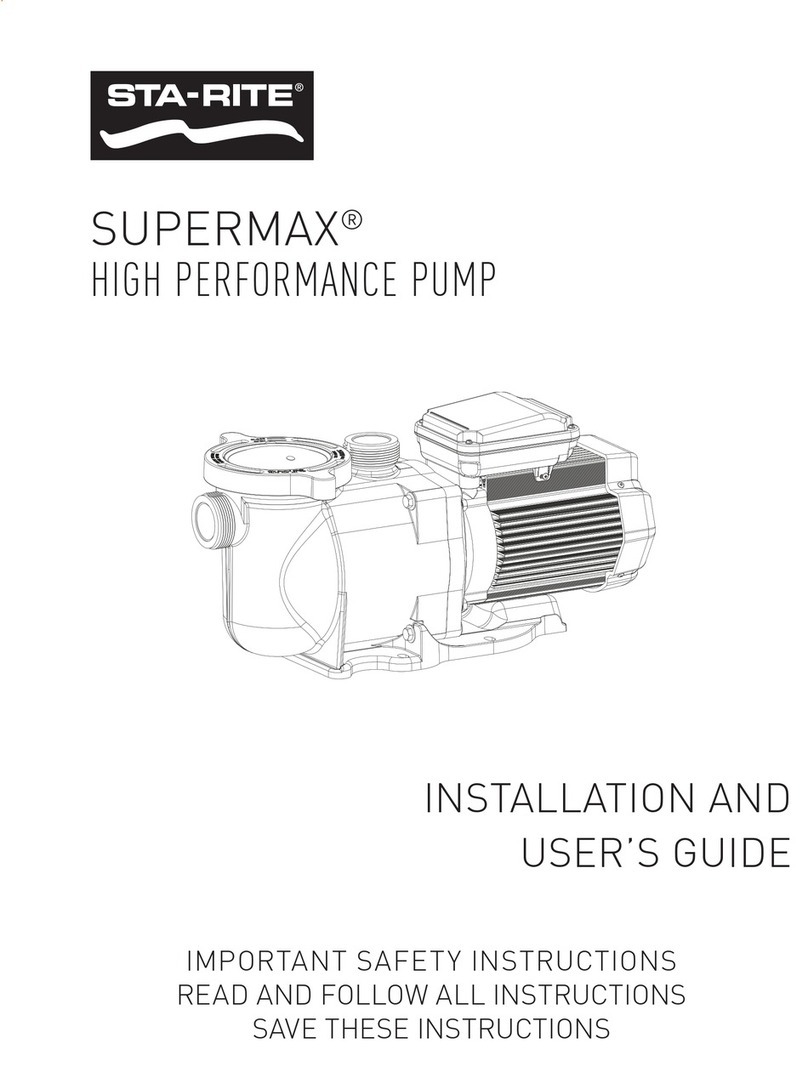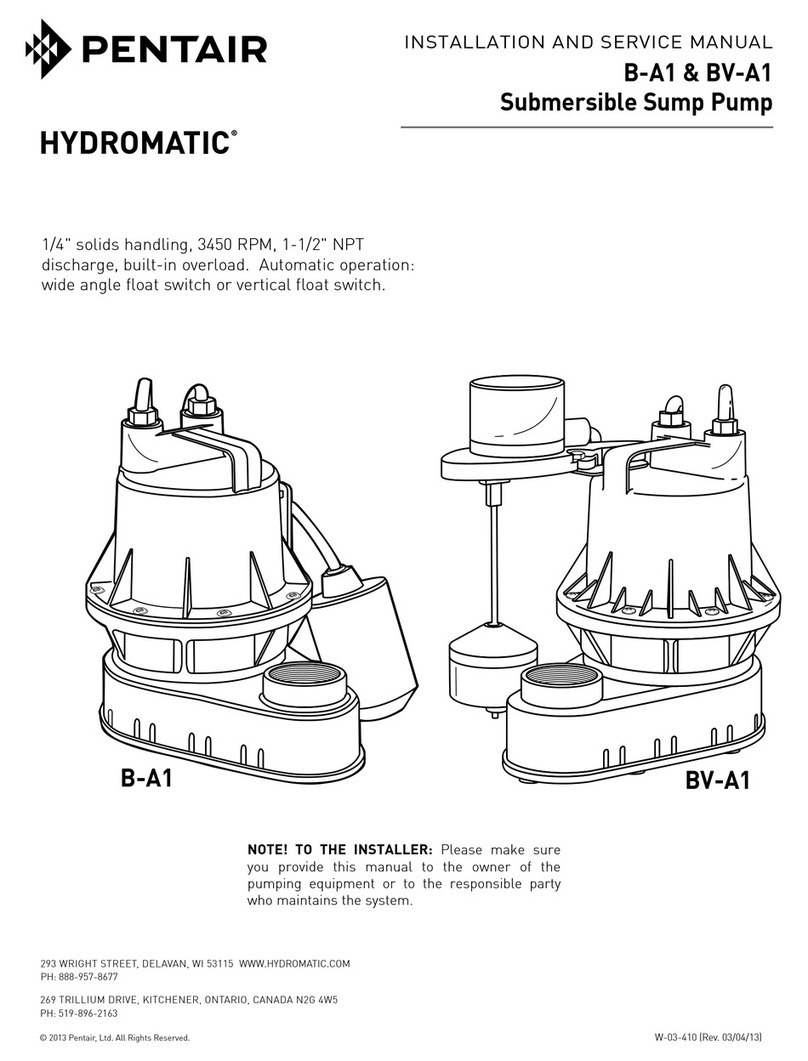
4
8. Check top bearing. If clean
and does not turn rough, bearings
can be reused and it is not necessary
to completely dismantle pump to
change bearings. If bearings are
damaged with dirt or heat, they
must be replaced. Remember to
reinstall the upper bearing load
spring.
9. Before replacing stator housing, be
sure outside lock screw is in place
and that O-ring is used under head
of bolt. A leak here can cause a
motor failure.
10. Replace stator housing onto the seal
chamber and bolt in place. Be sure
the seal failure wire is connected
before the housing is assembled.
Be sure back-off screws have been
loosened so that parts can come
metal to metal. Be sure O-ring
seal has been replaced. If O-ring
is nicked or cut, replace with new
rings. This applies to all O-rings
used in assembly.
11. After all leads are reconnected
in the connection box, make
a high voltage ground test on each
wire. The only wire that should
show ground is the green power
lead and the ground lead in the
auxiliary control cable.
12. For safety, complete pump should
be air checked under water for
leaks. Lay pump on side for
this oil filling with oil fill hole
upright. Do not completely fill;
leave oil about 1 inch below
plug hole. Use only Hydromatic
submersible oil in this chamber.
Replace plug; use Permatex on
threads. Install air valve in top
plug opening of motor housing
and charge housing with about
10 psi of air. Be sure air is dry. Do
not use air line where water may
be trapped in the line. Submerge
complete unit under water and
check for leaks.
13. Refill motor chamber with oil. Use
Hydromatic special submersible oil.
Fill chamber until oil covers top
of windings. Leave air space in
top for expansion. Use Permatex on
plug threads.
6. Turn both H-O-A switches
to Auto position and allow sump to
fill to the override control level.
7. Turn both switches to Auto position
and both pumps should start and
operate together until level drops to
turn-off point.
8. Repeat this operation cycle several
times before leaving the job.
9. Check voltage when pumps are
operating and check the amp draw
of each pump. Check amps on each
wire as sometimes a high leg will
exist. One leg can be somewhat
higher, 5 to 10%, without causing
trouble. For excessive amp draw on
one leg, the power company should
be consulted.
Phase Converters:
Phase converters are generally not
recommended, but in cases where only
single phase current is available phase
converter can be used. Be sure to size the
phase converter large enough for the amp
draw specified on the motor nameplate,
not necessarily by motor horsepower.
The warranty on all three phase
submersible motors is void if operated
with single phase power through a phase
converter and 3 leg ambient compensated
extra-quick trip overload protectors are
not used.
Pump Maintenance
As the motors are oil filled no lubrication
or other maintenance is required.
Generally these pumps give very reliable
service and can be expected to operate
for years on normal sewage pumping
without failure.
Lightning:
In some areas where considerable
lightning occurs, it is recommended that
a lightning arrestor be installed at the
control panel.
Lightning arrestors are good insurance
against damage to an expensive motor.
Field Service on Motor:
All submersible motors out of warranty
can be serviced in the field by any
reliable motor service shop. Any pump in
warranty must be returned to the factory
for service or repaired at an authorized
Hydromatic®service center. Charges
will not be allowed if in warranty pump
is not taken to an authorized Hydromatic
service center.
When field service is performed on
a pump, these instructions should be
carefully followed.
Replacing Stator:
1. If stator only is damaged,
it may not be necessary to
completely dismantle pump as
stator and housing can be lifted
from pump without disturbing seals
or bearings.
2. Drain all oil from upper housing,
remove drain plug in bottom of
stator housing and remove plug in
top of housing to allow air to enter.
3. After chamber is drained, remove
hold-down bolts and lift off.
Use care in lifting as the seal
failure connecting wire must be
disconnected before housing is
completely removed.
4. Set assembly on bench and
remove connection box. When box
is lifted off, connection wires to
motor will be exposed. These wires
will probably be burned, but each
wire is tagged with a metal marker
giving wire number. Cut the wires.
If the leads to the connection box are
burned, a complete new connection
box with new wire must be used.
The wires are potted in with sealing
compound and a new unit must be
obtained from the factory.
5. The stator is held in the housing with
a bolted-in end ring and an outside
locking screw.
6. After the ring is removed, turn
housing upright and bump on
hardwood blocks. This should jar the
stator loose and allow it to drop out.
7. Thoroughly clean housing before
replacing new stator. Replace stator
and make all wire connections to
connection box before replacing
housing on pump. This is important
as leads must be tucked behind the
windings by using hands up through
rotor core.
IMPORTANT: Use only compression
type insulated connectors on the wires.
Do not tape leads as oil will deteriorate
the tape and cause damage to stator
and bearings.




















